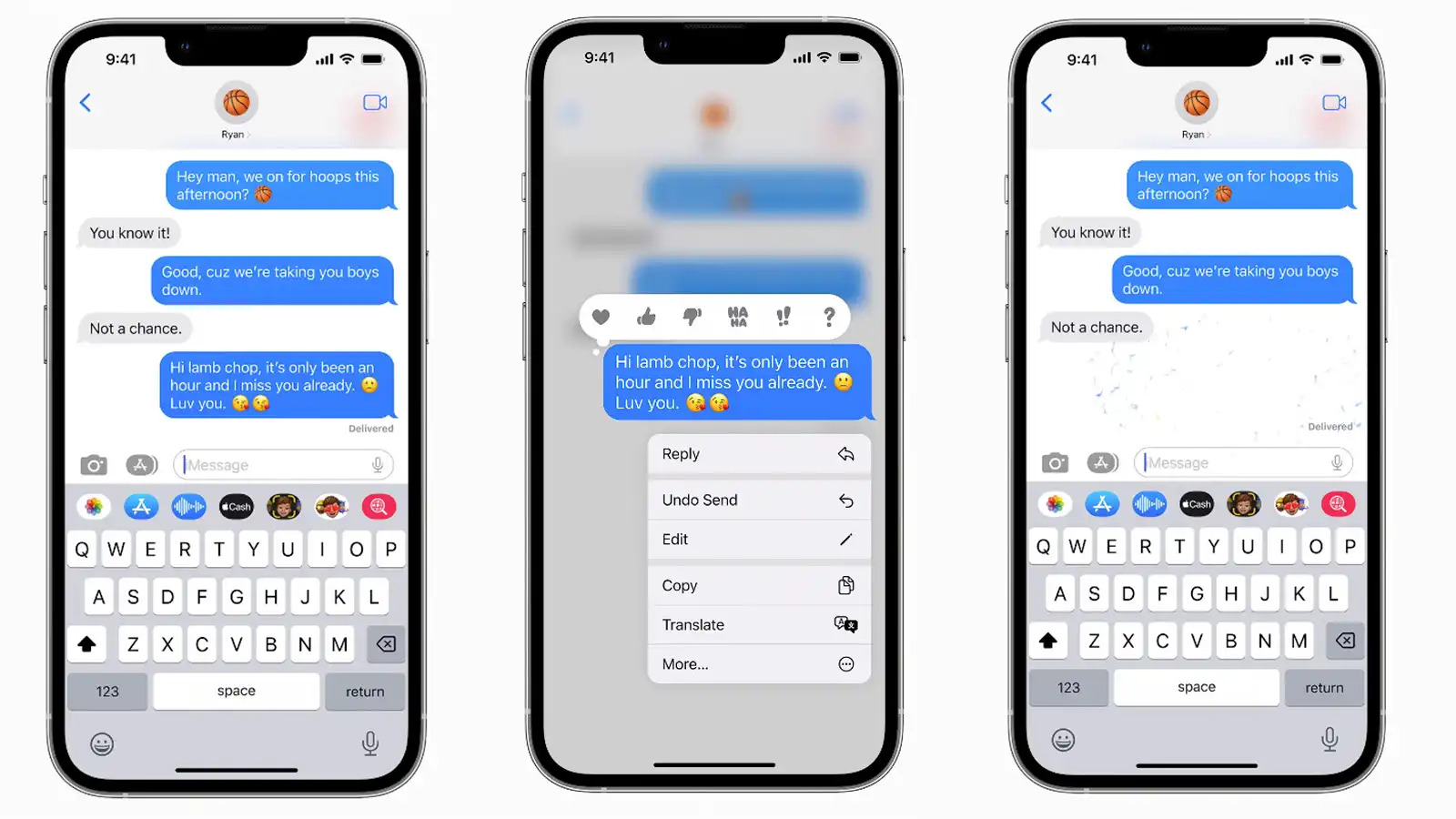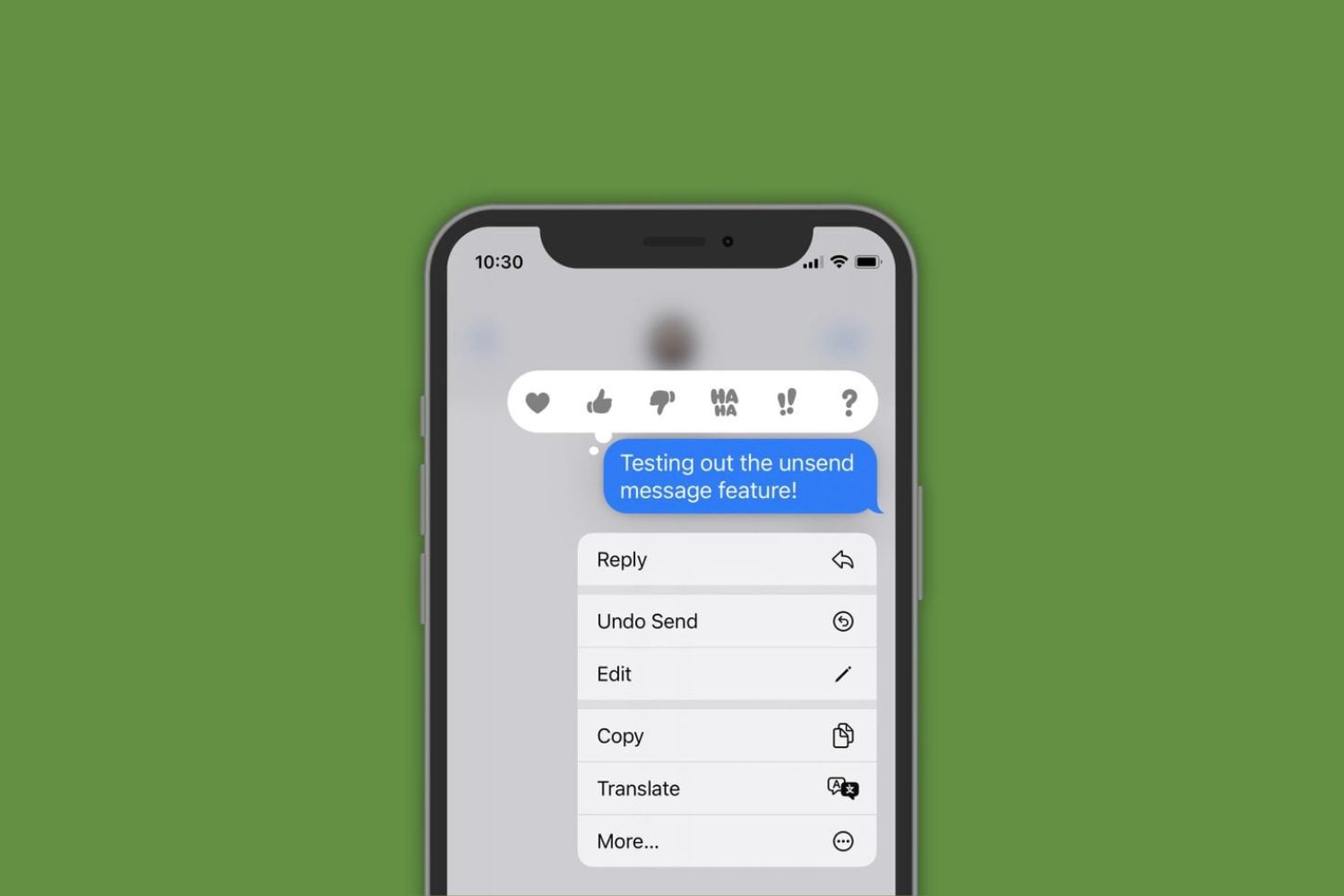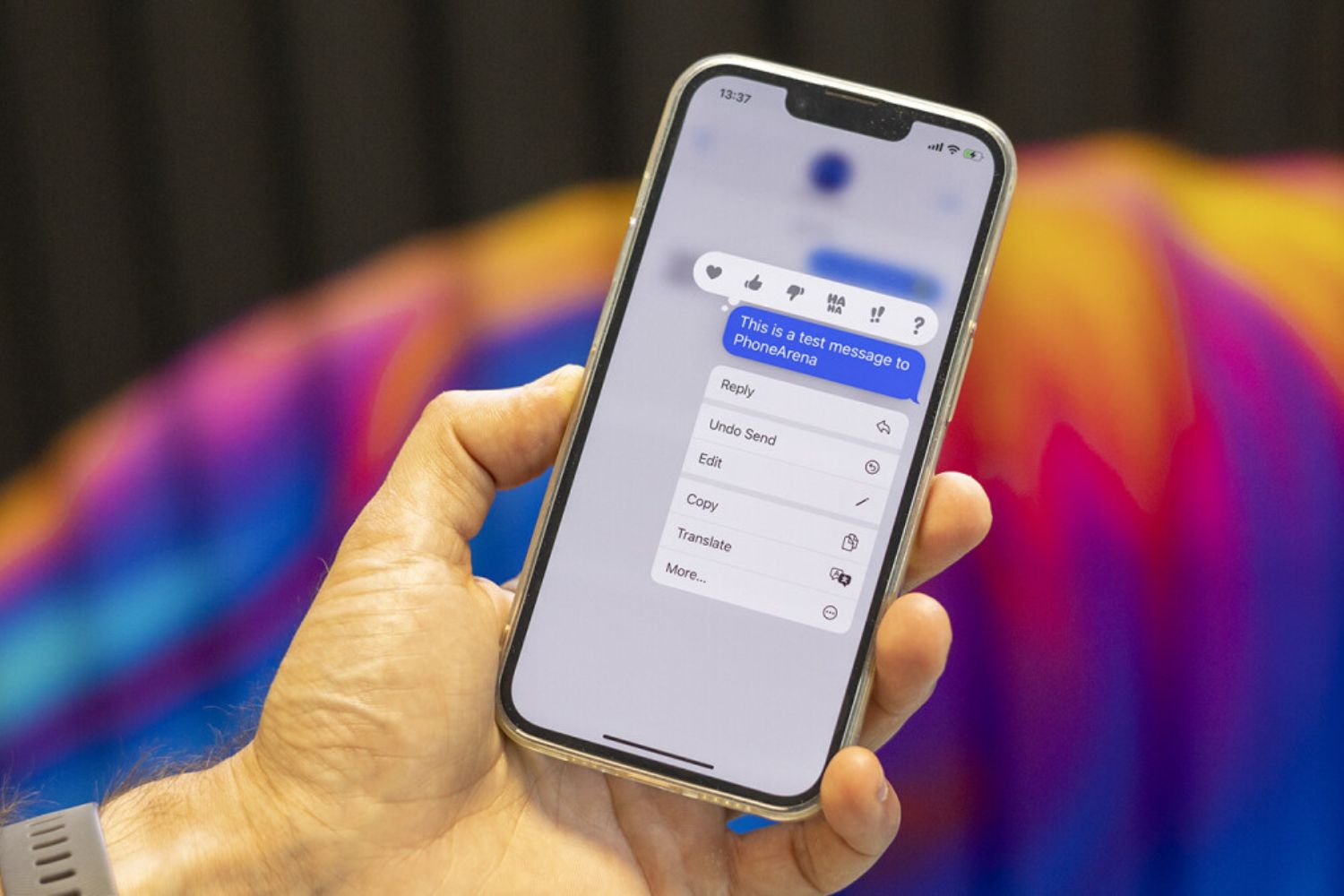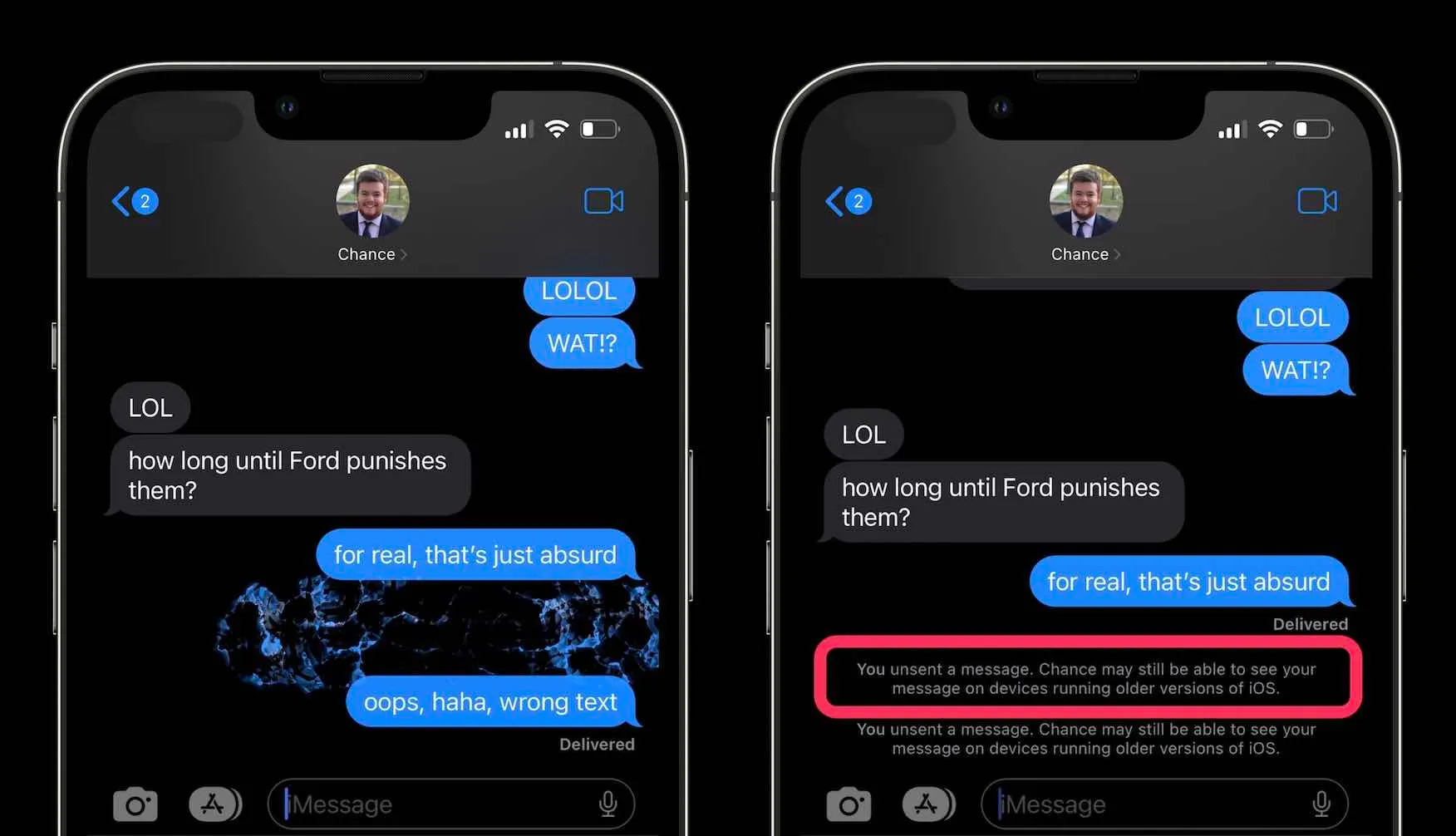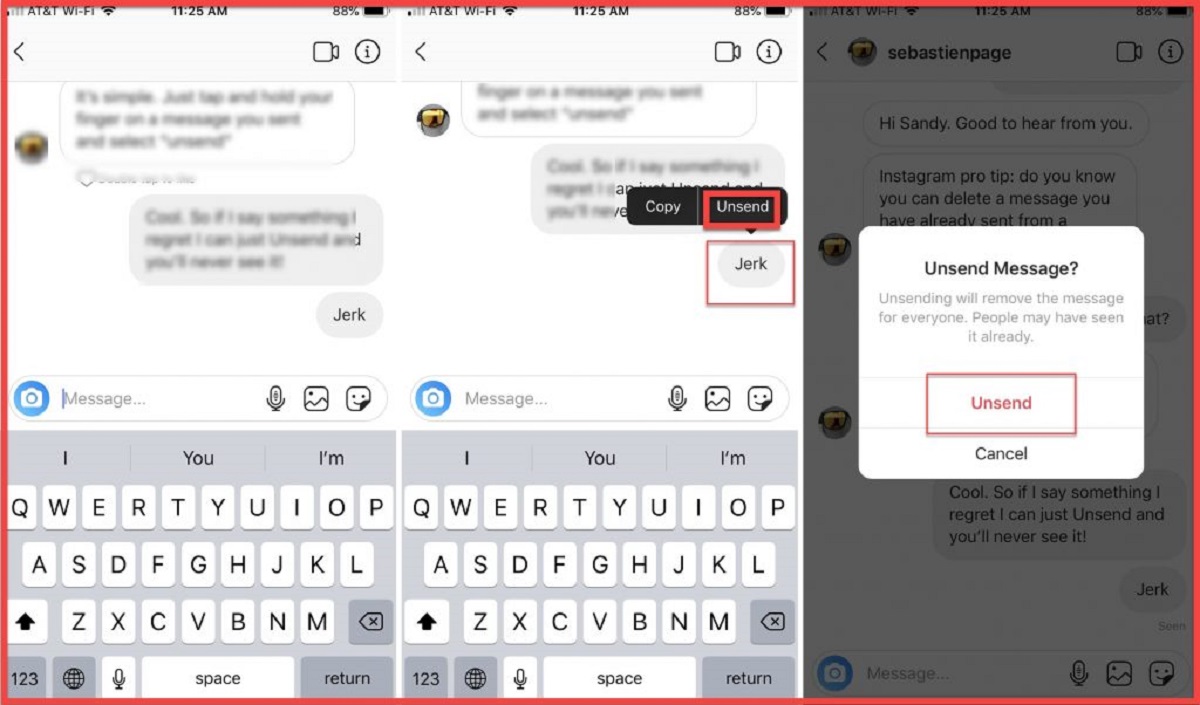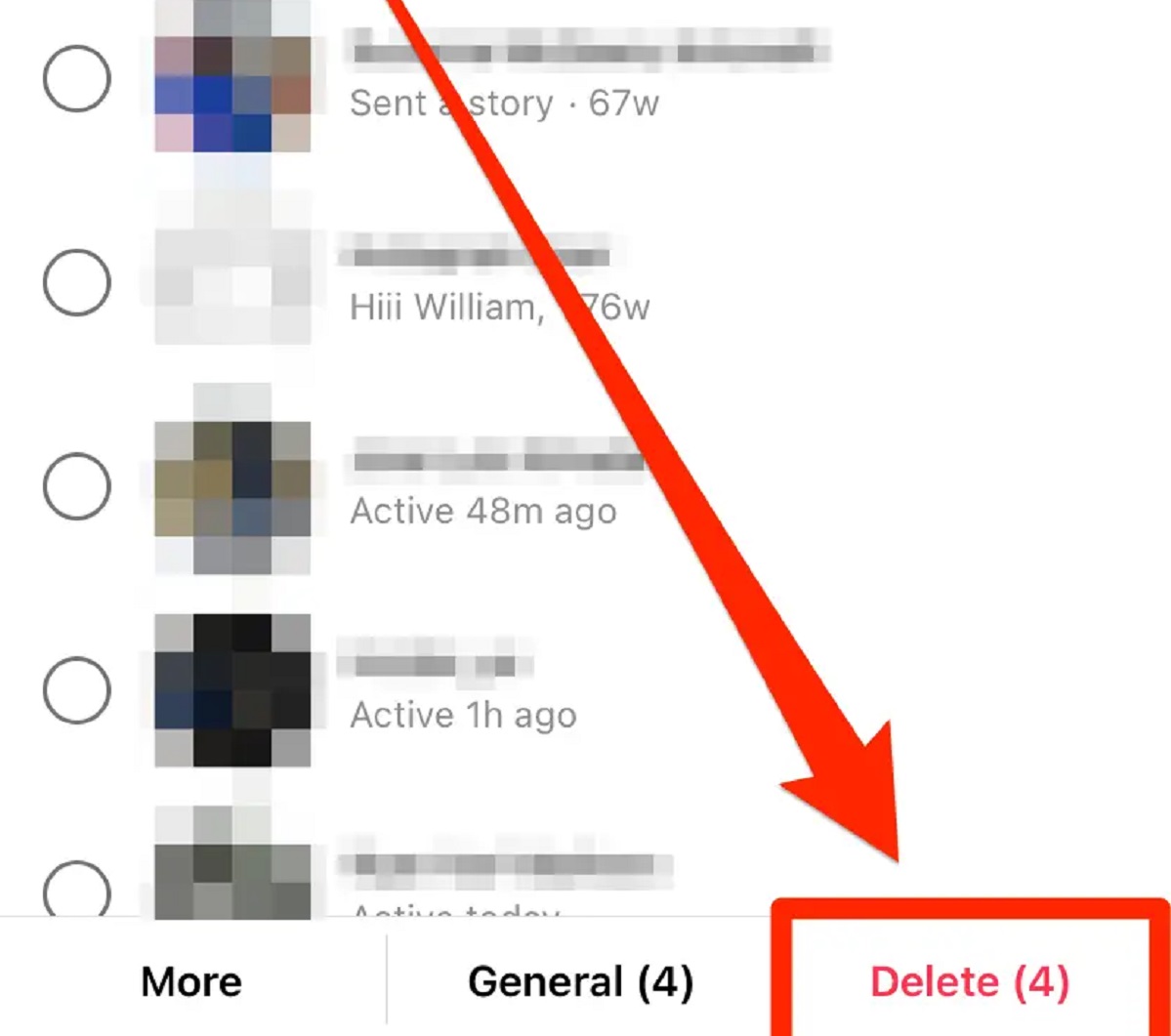Introduction
When it comes to messaging apps, iMessage is a popular choice for Apple users to send texts, photos, and videos seamlessly. However, one feature that many users find themselves missing is the ability to unsend a message once it has been sent. Have you ever been in a situation where you urgently wanted to retract a message you sent on iMessage? You’re not alone.
While iMessage offers a plethora of convenient features, such as encryption and seamless integration with other Apple devices, the lack of an unsend option can be frustrating. Unlike other messaging platforms like WhatsApp and Telegram, which provide the option to delete messages for both the sender and the recipient, iMessage does not have a built-in feature for undoing a sent message.
In this article, we will dive into the reasons behind this limitation and explore whether there are any workarounds to mitigate the absence of the unsend feature on iMessage. Although we may not be able to undo our sent messages in iMessage just yet, gaining a deeper understanding of the platform’s functionalities will help us make the most out of this popular messaging app.
What is iMessage?
iMessage is a messaging service developed by Apple Inc. that allows users to send text messages, photos, videos, and other multimedia content between Apple devices such as iPhones, iPads, and Mac computers. It is a default messaging app on iOS and macOS operating systems and offers several advantages over traditional SMS and MMS messaging.
One of the key benefits of iMessage is that it uses an internet connection, either Wi-Fi or cellular data, to send messages rather than relying on the cellular network. This means that iMessage can be used to send messages, including multimedia files, to other iMessage users around the world without incurring additional charges. It also offers end-to-end encryption, ensuring that messages are secured and protected from unauthorized access.
Furthermore, iMessage supports various features like read receipts, typing indicators, group messaging, and seamless integration with other Apple services. Users can even send messages across different Apple devices, with conversations automatically syncing between devices.
Overall, iMessage provides a user-friendly and feature-rich messaging experience for Apple users, enabling them to stay connected and share content with ease. However, despite its many advantages, the lack of an unsend feature remains a notable limitation.
Understanding the Message Sending Process
To better understand why iMessage doesn’t have an unsend feature, it’s important to delve into the message sending process on the platform. When you send a message on iMessage, it undergoes a series of steps before reaching its intended recipient.
Firstly, when you compose a message and hit the send button, iMessage checks if the recipient is also an iMessage user. If they are, the message is encrypted and sent over the internet to Apple servers. These servers then route the message to the recipient’s device, which decrypts and displays the message.
Importantly, once a message has been sent from your device to the recipient’s device, it becomes a part of the recipient’s messaging history. This means that even if you were able to delete the message from your device, it would still be present on the recipient’s device.
Apple places high importance on security and privacy, and the lack of an unsend feature can be viewed as a part of this strategy. By not providing an option to delete sent messages, Apple ensures that the conversation history remains intact and no data is lost or altered without the recipient’s consent.
It’s worth noting that iMessage does offer a feature called “Delete for Everyone” for deleting messages, but it has limitations. This feature allows you to remove messages, but only within a specific time frame and if both you and the recipient are using Apple devices. Even with this feature, messages can still be seen by the recipient until they are deleted, and there is no guarantee that the recipient hasn’t already seen the message before it was deleted.
With a clearer understanding of the message sending process on iMessage, we can explore the possible reasons behind the absence of the unsend feature.</p
The Lack of Unsend Feature in iMessage
One of the most prominent drawbacks of iMessage is the absence of an unsend feature, which allows users to retract a message they have sent. While other messaging platforms have embraced this functionality to provide users with more control over their messages, iMessage has yet to incorporate it into their platform. So, why does iMessage lack an unsend feature?
One possible reason is the aforementioned focus on privacy and security. By not allowing messages to be unsent, iMessage ensures that the full history of conversations is preserved and no data is lost or altered without the recipient’s knowledge. This can be particularly important in situations where message content may be vital for legal or personal reasons, as it prevents any disputes over deleted messages.
Another reason could be the complexity of the message delivery system. iMessage relies on robust encryption and routing mechanisms to ensure that messages are securely delivered to their recipients. Having an unsend feature would require additional mechanisms to manage the retrieval and deletion of messages, which could potentially introduce vulnerabilities in the system and compromise the overall security of iMessage.
Furthermore, the absence of an unsend feature may encourage users to think twice before sending a message, promoting a more thoughtful and deliberate approach to communication. It discourages impulsive or hasty messages, giving users a chance to review their content before sending it off.
While the lack of an unsend feature may be disappointing for some users, it’s important to acknowledge the trade-offs and considerations that Apple has taken into account in designing iMessage. Despite this limitation, users can still employ alternative approaches to mitigate the impact of unintentional or regrettable messages.
Next, we’ll explore some possible workarounds and alternative methods to effectively delete sent messages on iMessage, providing users with a sense of control over their conversations.
Possible Reasons for Not Having an Unsend Option
The absence of an unsend option in iMessage may leave users wondering why Apple has not implemented this feature despite its popularity on other messaging platforms. While we can only speculate on Apple’s specific reasons, there are several potential factors that may contribute to the decision.
Firstly, as mentioned earlier, Apple prioritizes privacy and security. By not allowing users to unsend messages, they ensure that the integrity of conversations is maintained. Once a message is sent, it becomes part of the recipient’s messaging history, preventing any potential disputes or claims that messages were deleted or altered.
Secondly, implementing an unsend option in iMessage could introduce complexities and potential vulnerabilities. The existing infrastructure and mechanisms for delivering and encrypting messages on iMessage may not easily accommodate the ability to undo sent messages without compromising the overall security and stability of the platform.
Additionally, introducing an unsend feature may require changes in messaging protocols and compatibility between iMessage and other messaging platforms. This could add complexities to the system and hinder seamless communication between Apple users and users on different messaging platforms.
Moreover, Apple may have made a strategic decision to differentiate iMessage from other messaging apps. By not offering an unsend option, iMessage maintains its own distinct user experience and sets itself apart from competitors. This can contribute to a sense of reliability and consistency, as users know that sent messages cannot be easily retracted.
Lastly, it is possible that Apple has considered user behavior and the potential misuse of an unsend feature. Allowing users to unsend messages could create a sense of uncertainty and encourage users to send impulsive or inappropriate content without fear of repercussions. By requiring users to be more careful and deliberate in their messaging, Apple promotes responsible and conscious communication.
While these are potential reasons, without official statements from Apple, we can only infer the motivations behind the absence of an unsend option on iMessage. Regardless, understanding these factors can help users make informed decisions and explore alternative methods to address the need for deleting sent messages on the platform.
Other Messaging Platforms with Unsend Feature
While iMessage may not have an unsend feature, there are several other popular messaging platforms that offer this functionality to their users. Let’s take a look at some of these platforms:
1. WhatsApp: WhatsApp, one of the most widely used messaging apps worldwide, allows users to unsend messages within a certain time frame. Whether it’s a text message, photo, or video, users can simply tap on the message and choose the “Delete for Everyone” option to remove it from both their own and the recipient’s device.
2. Facebook Messenger: Similar to WhatsApp, Facebook Messenger offers an unsend feature that lets users delete previously sent messages. Users have the ability to delete messages for both themselves and the recipient, ensuring that the content is completely removed from the conversation.
3. Telegram: Telegram is known for its robust privacy features and its unsend option is no exception. Users can delete messages they’ve sent or received, and the deletion is reflected on both ends. Additionally, Telegram also allows users to set a self-destruct timer for messages, adding an extra layer of privacy.
4. Snapchat: Snapchat, a popular messaging application known for its ephemeral nature, allows users to unsend messages even after they have been viewed. This unique feature adds an element of spontaneity and privacy to conversations, as messages disappear after they have been read.
These are just a few examples of messaging platforms that provide users with the ability to unsend messages. The inclusion of this feature in these platforms highlights the value that users place on having control over their sent messages and the ability to rectify any mistakes or unintended content.
While iMessage currently lacks an unsend feature, it’s worth considering these alternatives if the ability to unsend messages is a crucial aspect of your messaging experience. However, it’s important to note that each platform has its own specific functionalities and user base, so finding the right fit for your needs and preferences is essential.
Workarounds for Deleting Sent Messages
Although iMessage does not have a built-in unsend feature, there are still some workarounds that you can employ to delete or minimize the impact of sent messages. While these methods may not completely erase the messages from the recipient’s device, they can help mitigate any unintended consequences. Here are a few workarounds to consider:
1. Delete for Everyone (within a time frame): As mentioned earlier, iMessage does offer a limited version of an unsend feature called “Delete for Everyone.” This feature allows you to delete messages, but it needs to be done within a specific time frame and only works if both you and the recipient are using Apple devices. Note that there is no guarantee that the recipient hasn’t already seen the message before it was deleted.
2. Contact the recipient: If you’ve sent a message and immediately regret it, one option is to quickly contact the recipient and politely request that they disregard or delete the message. While this relies on the recipient’s cooperation, it can be an effective way to mitigate any potential misunderstandings or unintended consequences.
3. Disable iMessage: If you realize your mistake and want to stop any further delivery of iMessages, you can disable iMessage temporarily. This will prevent any future messages from being sent as iMessages and instead be delivered as regular SMS, which can be easier to delete or dismiss. Remember to re-enable iMessage once the situation is resolved.
4. Communication and clarification: If you have sent a message that you regret, it’s important to have an open and honest conversation with the recipient. Explaining your intentions or discussing any misunderstandings can go a long way in resolving any issues and maintaining a healthy communication flow.
5. Double-check before sending: Prevention is always better than cure. Taking a few extra moments to review your message before sending it can help you catch any errors or potential issues. This can help minimize the need for workarounds or regretting sent messages in the first place.
While these workarounds may not completely erase the impact of sent messages, they can offer some measures to manage the situation. It’s essential to remember that effective communication, understanding, and being responsible for our words are key factors in maintaining healthy and respectful relationships, both online and offline.
Conclusion
While iMessage may lack an official unsend feature, it is important to understand the reasons behind this limitation. Apple’s focus on privacy, security, and maintaining the integrity of conversations contributes to the absence of an unsend option. Despite this, there are workarounds that can help users mitigate the impact of sent messages, such as the limited “Delete for Everyone” option, contacting the recipient, disabling iMessage, and emphasizing open communication.
It is worth noting that other messaging platforms like WhatsApp, Facebook Messenger, Telegram, and Snapchat offer unsend features, allowing users to delete sent messages. These options demonstrate the popularity and demand for such functionalities, as users value the ability to rectify mistakes or remove unintended content.
While we may hope for the inclusion of an unsend feature in future updates of iMessage, in the meantime, it is crucial to exercise caution and thoughtfulness when sending messages. Double-checking before sending, being mindful of the content we share, and maintaining open communication can help minimize the need for deleting or retracting messages.
Ultimately, the absence of an unsend feature on iMessage should not hinder users from enjoying the many other features and benefits that the platform offers. By understanding the limitations and exploring alternative methods, users can make the most of their iMessage experience and foster meaningful and respectful conversations.







